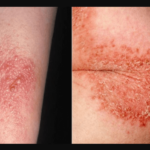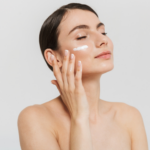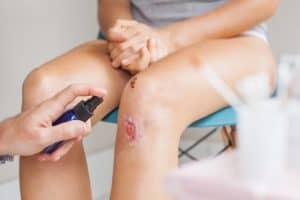You inflicted a wound from doing house chores or office work. It’s a big wound, but it doesn’t bother you that much. Why? Because whether it’s going to take a long or short time to heal, you know that your wound is going to heal anyway. Isn’t it a wonder how your wound heals? So, how does your body make new skin?
Your body makes new skin by replacing old skin cells with new skin cells every 27 days approximately. New skin cells develop at the base of the epidermis and replace the dead cells at the surface. This cycle occurs on a daily basis which explains how your wounds heal.
You have millions of skin cells in your body. The surface of your skin — the one that you can touch — consists of many dead skin cells. But even if you don’t have a wound, these skin cells regenerate all the time.
Read on to learn more about how your body makes new skin, the different layers of your skin, and how to care for your skin.
How Does Your Body Make New Skin?
To further look into how your body regenerates and makes new skin, we should look at the different layers of the skin. The main 2 layers of the skin are the epidermis and the dermis.
How Does the Epidermis Regenerate?
If your outer skin gets damaged, repair starts at the bottom-most part of the epidermis. This refers to the stratum basale. Its cell proliferation is the first level of the regeneration process. All you have to do is to wait until the cells grow and mature. Once they do, these cells move from the bottom-most layer and up to the surface of your skin.
How Does the Dermis Regenerate?
Some injuries do not only cause damage to the epidermis. But there are times when even the dermis gets damaged. As mentioned earlier, one example is when you get sunburned. In which case, the regeneration process is different.
The first level of the dermis’ regeneration process is also called cell proliferation. For the first stage, fibroblasts are the most important cells. These cells help in the healing process. They move from the outer part of the wound until they reach the interior. Through fibroblasts, elastin fibers and collagen secrete inside the wound. This occurs in a continuous manner until new skin forms.
Once the dermis regenerates, the regeneration process for the epidermis begins. Of course, you would know once your wound heals. The surface of your skin gets back to its normal appearance.
The below video gives a helpful computer-animated visual of the skin cell regeneration process in action:
Why Is Skin Cell Regeneration so Important?
Your skin is essential not only because of the role it plays in your physical appearance. More than anything else, it plays an important role in your general health. So, in addition to asking, “How does your body make new skin?” we also want to ask, “Why is skin cell regeneration so important?” Below I’ll cite some reasons behind the skin’s significance to you:
1. It Prevents You from Getting Infected
You’re exposed to bacteria and viruses every minute of your life. Without your skin, you’ll be prone to infections. More so, the infection could spread to other parts of your body. This could lead to some serious health problems. This only goes to show that your skin has a big role to play in preventing yourself from getting sick.
2. It Protects Your Skin’s Inner Layers from the Harshness of the Sun
The sun, of course, is essential for life and overall health. But the sun’s rays can be damaging to your skin too. That’s why dermatologists ask us to put sunblock before we spend hours under the sun. Otherwise, the sun’s ultraviolet rays will damage not only the surface of our skin. But it will also damage our skin’s inner layers. We all know this condition as sunburn.
If you got sunburned, this means that your skin’s inner layers got damaged by the sun. If it’s a serious sunburn, you might not be capable of regenerating new skin cells anymore. Thus, a sunburn can cause all your skin cells to die. Worse, you can even develop skin cancer.
3. It Is Capable of Controlling the Temperature of Your Body
In effect, you can consider your skin as the thermostat of your body. When it’s cold, your skin shivers. It’s the signal sent by the skin to the blood vessels. The blood vessels then contract to keep you warm.
But when it’s hot, your skin produces sweat. It signals that the blood flowing to the capillaries should increase. This will then produce more sweat. This allows your body to cool off until the water — or your sweat — evaporates from the skin.
4. It Is Capable of Sensing Pain
We all know that we sense pain through our skin. But do you realize why it’s important to sense pain? It’s because the pain is the signal sent by your skin to your brain. Your brain then thinks of an appropriate way to react.
For instance, you tripped and fell, causing a bruise. Even a simple bruise will cause a little pain, right? That pain is your brain’s signal to think of what to do with your bruise.
Same thing when the heat of the sun — or even the extreme cold weather — seems to hurt your skin. Whatever your skin feels, your brain takes it as a signal to take appropriate action.
These are enough reasons why you should be thankful that your skin regenerates. Otherwise, you’d have nothing but dead skin cells, and your wounds wouldn’t heal.
See the below video for more on the science of skin as well as more on how does your body make new skin:
What Are the Layers of the Skin?
As mentioned earlier, two of the main layers of the skin are the epidermis and the dermis. Let’s look at each closer, including the third layer, the subcutis. It’s important to know these different layers of the skin as they’ll give more insight into what’s going on. These layers are as follows:
1. The Subcutis
The subcutis is the bottom-most layer of your skin. It consists of fat that protects you in case of trauma.
2. The Dermis
The dermis is on top of the subcutis and lies beneath your outer skin. The real substance of your skin comes from the dermis. This is due to its elastin fibers and collagen.
3. The Epidermis
The epidermis is on top of the dermis, and it’s the layer that you can touch. It consists of layers of keratinocytes. “Young” keratinocytes are the bottom-most layer of the epidermis. Once they mature, they move to the surface.
Each skin layer has its way of regenerating. But the regeneration process varies for each layer.
How Do You Take Care of Your Skin?
On average, your body makes new skin every 27 days. But it’s possible for the regeneration process to slow down. In which case, it could mean that the health of your skin is deteriorating.
Taking care of your skin will prevent you from having skin problems. More so, it’ll help you prevent health issues in general.
Here are some basic steps you can follow:
1. Train Yourself to Manage Stress
There are various ways you can manage stress. These include:
- Get enough hours of sleep
- Avoid working too many hours
- Exercise
- Find time to unwind
These will prevent you from experiencing acne breakouts. More so, all these will prevent you from getting other types of skin problems.
2. Maintain a Healthy Diet
I only have two diet tips for you:
- Drink a minimum of 8 glasses of water a day. It’s the best for skin hydration.
- Eat the right types of food. These include:
- Lean proteins
- Whole grains
- Vegetables
- Fruits
Following a healthy, well-balanced diet will allow you to have younger-looking skin.
3. Be Gentle with Your Skin
Here are some tips on how to be gentle with your skin:
- Avoid taking too long in the shower. A long shower or bath removes essential oils from the skin.
- Before you shave, make sure to apply shaving lotion or cream. Doing so will lubricate and protect your skin.
- Use mild soaps. The strong ones also remove essential oils from the skin.
- After taking a bath, gently dry your skin with a towel. Avoid wiping your skin in a harsh manner. Doing so will remove skin moisture.
- Whether your skin is dry or not, apply moisturizer after taking a bath. A moisturizer with SPF is best for your skin.
4. Find Ways to Protect Yourself from the Sun
Here are some tips on how to go about it:
- Cover your skin with protective clothing. This type of clothing includes:
- A hat or cap
- A pair of pants
- A long skirt
- A long-sleeved shirt or blouse
- As much as possible, avoid long sun exposure from 10:00 in the morning until 4:00 in the afternoon. The rays of the sun are harmful to the skin during this time.
- Before you leave the house, apply sunblock. If you’re going to be outdoors for a long period of time, apply sunblock every so often.
5. Do Not Smoke
Smoking is detrimental to your skin’s health. The harm it causes includes the following:
- It reduces the nutrients and oxygen your skin needs
- It adds facial wrinkles
- It damages elastin fibers and collagen
- It increases the risk of skin cancer
Smoking doesn’t have any benefits for your skin. More so, it doesn’t have any benefits for your general health.
See the below video for how skin cells turnover, as well as an overall look at the skin cell layers and generation process.
Conclusion – How Does Your Body Make New Skin?
So to recap, how does your body make new skin?
New skin cells develop at the bottom-most layer of your skin. Once these cells grow and mature, they move up to the surface of your skin to replace the dead cells. This cycle occurs on a regular basis which explains how your wounds heal.
But even if you don’t have a wound, your skin nonetheless regenerates in a continuous manner. In fact, it automatically regenerates every 27 days or so.
If you don’t give the proper care to your skin, it might not regenerate as often as it should. So, make sure to maintain healthy skin. After all, it’s not a difficult task to do.
Related reading:
How Long After Quitting Smoking Does Skin Improve?
How Long Does It Take to Shed Your Skin?
How Long Does It Take for Skin to Regenerate?

![Neutral Skin Tone Defined [and Best Colors for Neutral Skin] neutral skin tone](https://skincaregeeks.com/wp-content/uploads/2021/05/neutral-skin-tone-150x150.png)







